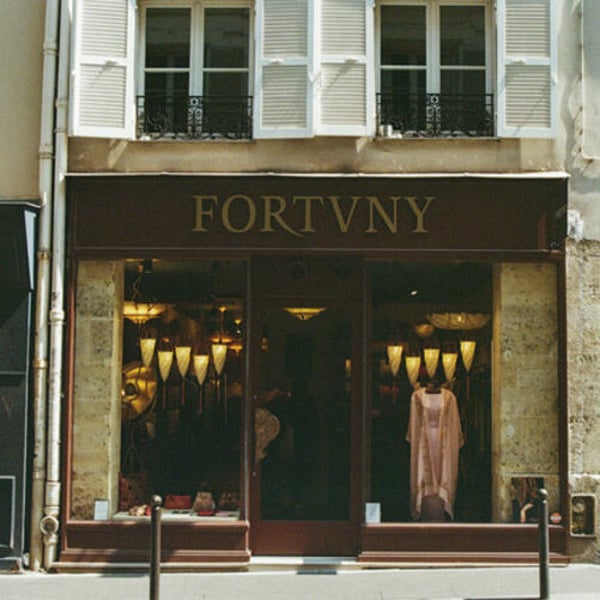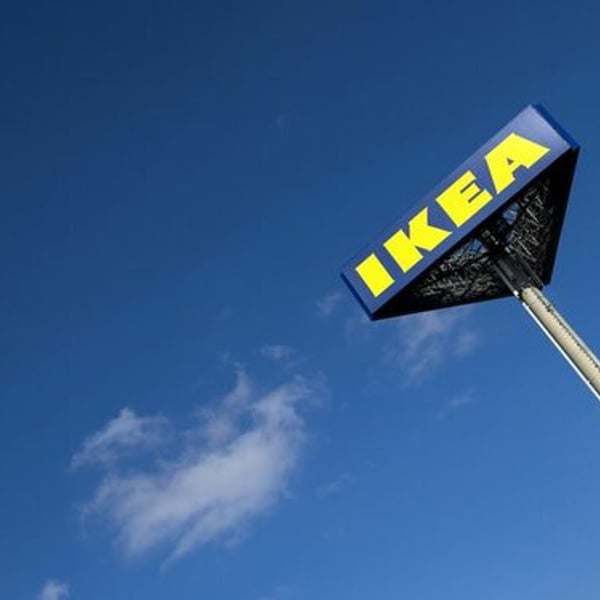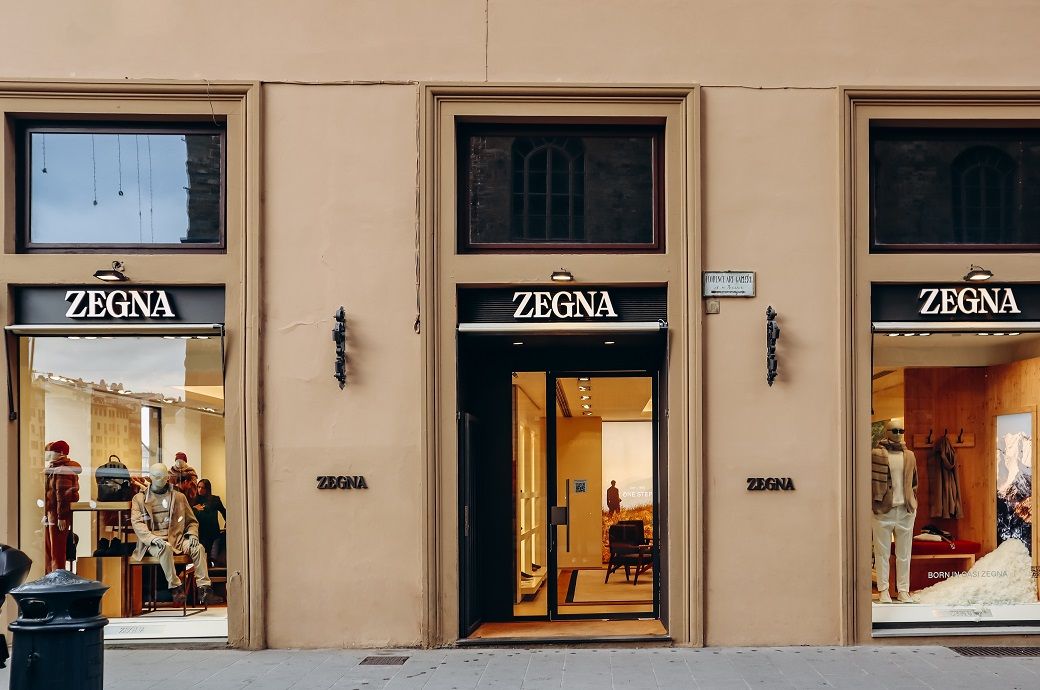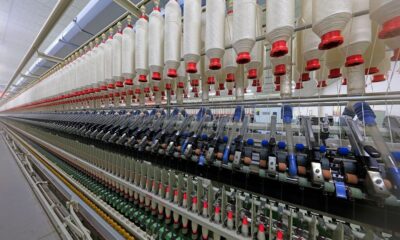Fashion
Fortuny opens new boutique in Paris

Published
September 2, 2025
Fortuny, the iconic Venetian house known for its lighting and fashion creations, is pleased to announce the opening of its second Paris boutique, located in the heart of the Beaux-Arts district, at 27 rue Bonaparte, in the heart of Saint-Germain-des-Prés.
This new store expands the brand’s presence in the French capital, as it already boasts a historic boutique at number 17 on the same street.
The opening reinforces a historical connection with Paris, a city that Mariano Fortuny was familiar with and where he opened boutiques as early as 1912. He is regarded as one of the greatest textile artists of all time and is honored with his own Fortuny Museum, housed inside the Gothic palazzo Pesaro Orfei in Venice.
Born in Granada, Spain, Fortuny moved to Paris at the age of three, before eventually settling in Venice. At 18, he met the woman he would eventually marry, Henriette Negrin, in Paris—a city where the multi-faceted artist registered around 20 inventions. Perhaps Fortuny’s signature idea—a unique silk pleating process—was in fact Negrin’s invention.

Today, the Venetian house Fortuny continues this dialogue between Venice and Paris, honoring his legacy while introducing new expressions of heritage and contemporary creation.
Founded in Venice at the beginning of the 20th century, the brand Fortuny embodies timeless elegance and a constant pursuit of beauty and innovation. In the 1980s, Venetian entrepreneur Lino Lando passionately revived the production of Fortuny lamps and garments, including the iconic Delphos dresses, thus preserving Mariano Fortuny’s legacy and breathing new life into his timeless creations.
The new boutique will offer a curated selection of signature pieces and invite visitors to experience the world of Fortuny in a refined and immersive setting.
Copyright © 2025 FashionNetwork.com All rights reserved.
Fashion
Bangladesh’s economic outlook cautiously optimistic: Govt

As Bangladesh heads towards general election in February next year, the GED’s economic outlook is cautiously optimistic.
Deep structural weaknesses along with the political transition period could constrain economic momentum, Bangladesh’s Planning Commission recently said.
The economy could regain pace if the election leads to a clear political direction and reforms are carried out.
Election-related spending and possible disruptions may add further pressure on inflation and the foreign exchange market.
The update said the economy could regain pace if the election produces a clear political direction and the next government decisively undertakes long-delayed reforms, particularly in improving the business climate, stabilising the banking system and ensuring fiscal and energy security.
Without such reforms, the recovery may be short-lived, it noted.
Election-related spending and possible disruptions during the transition are expected to add further pressure on inflation and the foreign exchange market, complicating stabilisation efforts, domestic media reports cited the GED document as saying.
Overall inflation dropped to 8.17 per cent in October from 10.87 per cent a year earlier. Non-food inflation inched up to 9.13 per cent.
While bank deposits grew at nearly double-digit rates through August and September, private-sector credit growth fell to just 6.29 per cent—the lowest in at least four years and well below the central bank’s target of 7.2 per cent for fiscal 2025-26.
High lending rates, cautious bank behaviour and political uncertainty have depressed investment appetite. Meanwhile, government borrowing from commercial banks surged by 24.45 per cent in September, raising concerns about crowding out private borrowers, said the document.
Revenue collection in October this year fell short of the target by Tk 8,324 crore, achieving only 77.37 per cent of the month’s goal. All major revenue streams—import duties, domestic VAT, and income tax—underperformed.
Foreign exchange reserves improved significantly, rising from $24.35 billion in November 2024 to $32.34 billion in October 2025.
Export earnings remained volatile. Exports peaked in July at $4.77 billion, but suffered sharp declines in April and June.
Fibre2Fashion News Desk (DS)
Fashion
IKEA opens its furthest store from Sweden in New Zealand

By
Reuters
Published
December 4, 2025
IKEA opened its first store in New Zealand on Thursday, entering its 64th market and marking the furniture retailer’s most distant outpost from its native Sweden. The long-awaited 34,000 square-metre (365,973 square foot) store at the Sylvia Park shopping centre in Auckland employs 500 people and is IKEA’s 505th store.
IKEA’s New Zealand expansion was announced in 2019 and comes 50 years after opening in neighbouring Australia. IKEA now operates in 64 markets around the world.
IKEA franchisee Ingka Group said the opening, which drew thousands of people, was special given New Zealand’s distance from Sweden. “It’s a real leap of faith, investment and friendship, showing we’re not just exporting a store, we’re planting roots for the long term, creating jobs, learning from local communities and tailoring our offer for Kiwi homes,” Retail Manager Tolga Oncu said in a statement.
© Thomson Reuters 2025 All rights reserved.
Fashion
Italy’s Ermenegildo Zegna Group unveils new leadership structure

Ermenegildo “Gildo” Zegna, currently Group Chairman and CEO, will assume the role of Group Executive Chairman. In this capacity, he will focus on safeguarding the legacy and integrity of the Group’s three brands—ZEGNA, Thom Browne, and TOM FORD FASHION—while continuing to drive long-term value creation. He will also retain oversight of the Group’s Textile Division, the Group General Counsel’s office (including Internal Audit), and the External Relations department, which encompasses Sustainability, Investor Relations, and Corporate Communications.
Ermenegildo Zegna Group has announced a new leadership structure effective January 1, 2026.
Gildo Zegna will become group executive chairman, focusing on brand legacy and key corporate areas.
Gianluca Tagliabue will be appointed group CEO, while Edoardo and Angelo Zegna will become co-CEOs of the Zegna brand, leading brand strategy, product, and commercial performance.
Gianluca Tagliabue, currently Group Chief Financial Officer and Chief Operating Officer, will assume the role of Group CEO subject to shareholders’ approval. Working in close partnership with the Group Executive Chairman, Mr. Tagliabue will be responsible for shaping and executing the Group’s long-term strategy, driving business performance across all brands, and further strengthening the integration of the Group’s corporate functions. He will also oversee manufacturing operations. The CEOs of the Group’s brands will report to him. Gian Franco Santhià, currently Group Control & Chief Accounting Officer, will be appointed as Group CFO, reporting to the Group CEO.
Edoardo and Angelo Zegna, members of the fourth generation of the Zegna family, will be appointed Co-CEOs of the ZEGNA brand. They will succeed Gildo Zegna, who has held this role for over 20 years. Edoardo Zegna, currently Chief Marketing and Digital Officer of ZEGNA as well as Group Chief Sustainability Officer, will lead all aspects of brand strategy, from brand image to marketing, and, together with ZEGNA’s Artistic Director Alessandro Sartori, design matters, including store design. Angelo Zegna, currently CEO of ZEGNA’s EMEA region and Global Client Strategy Director, will oversee product development, merchandising, and commercial strategy, driving performance across markets and channels.
Gildo Zegna, Chairman and CEO of the Ermenegildo Zegna Group, commented: “I am proud and excited about today’s announcement. One of the most important responsibilities of a leader is to think ahead—to prepare for the future and empower the next generation of leadership. This belief has always been deeply rooted in our family values and is a key force behind today’s announcement.
Together with the Board, I have asked Gianluca Tagliabue to assume the role of Group CEO. Over the past decade, Gianluca has been a cornerstone of our Group, leading the company through key transformations. The Ermenegildo Zegna Group is a custodian of authenticity. Gianluca embodies this philosophy and will support the CEOs of our brands in pursuing the Group’s mission as a trusted and forward-looking guide.
Edoardo and Angelo’s complementary strengths and clear vision will make them a highly effective team to lead ZEGNA brand. They continue the family legacy and have demonstrated their business leadership over the past years. Together, they will not only carry forward the brand’s timeless heritage, but strengthen it further.
As Executive Chairman, I will stand alongside our new leadership team and all our colleagues — a curious and passionate custodian of our brands’ vision and values, as I have always been. I will also continue to oversee the Group’s textile platform — where it all began. I am looking forward to shaping our Group’s next chapter with this new leadership team.”
Note: The headline, insights, and image of this press release may have been refined by the Fibre2Fashion staff; the rest of the content remains unchanged.
Fibre2Fashion News Desk (RM)
-

 Tech4 days ago
Tech4 days agoGet Your Steps In From Your Home Office With This Walking Pad—On Sale This Week
-

 Entertainment3 days ago
Entertainment3 days agoSadie Sink talks about the future of Max in ‘Stranger Things’
-

 Sports3 days ago
Sports3 days agoIndia Triumphs Over South Africa in First ODI Thanks to Kohli’s Heroics – SUCH TV
-

 Fashion3 days ago
Fashion3 days agoResults are in: US Black Friday store visits down, e-visits up, apparel shines
-

 Politics3 days ago
Politics3 days agoElon Musk reveals partner’s half-Indian roots, son’s middle name ‘Sekhar’
-

 Tech3 days ago
Tech3 days agoPrague’s City Center Sparkles, Buzzes, and Burns at the Signal Festival
-
Uncategorized1 week ago
[CinePlex360] Please moderate: “Americans would
-

 Tech1 week ago
Tech1 week agoWake Up—the Best Black Friday Mattress Sales Are Here


















